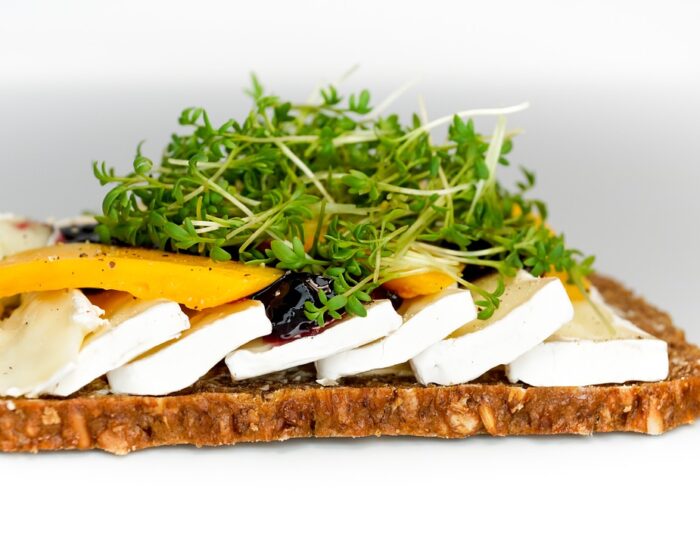by Chef K.T. Murphy
What is the Dukan Diet?
The Dukan Diet was developed by French Physician Pierre Dukan in 2013. This diet was inspired by an interaction with a case of obesity that he encountered while practicing as General Practitioner in Paris during 1975.
His interest grew from there into a 20 some odd year focus and he delved into the subject looking for a solution; being an overweight individual himself he could empathize.
His research into the subject culminated in the publishing of his book, “Je ne sais pas maigrir” in 2000, which in English translates to “I don’t know how to get slimmer.” He then went on to develop the Dukan Diet in 2013.
What Is The Dukan Diet?
This 4-phase diet program only allows for 100 foods and uses a unique approach to promote weight loss without the feeling of complete deprivation.
This diet doesn’t focus on portion control, but rather on regulation of the types of foods you are consuming. It goes a step further beyond calorie regulation to choosing foods that promote weight loss and over all good health.
This program is broken down into four phases: Attack, Cruise, Consolidation, and Stabilization.
The Dukan Diet Phases
Attack phase
The Attack phase, otherwise known as the Pure Protein Phase, is the first phase of the Dukan program. In this phase there is quite a bit of restriction in terms of the food you can eat. There are no starches, dairy products, high calorie drinks, or sweets allowed, which is not much different from other diets. However, the restrictions go deeper than that. So what exactly can you eat in this phase?
Meats
Lean beef, veal, pork, venison, turkey, fish, chicken and low fat ham
Organ meats (including liver and tongue)
Vegetables – Non-starches
Lettuce, asparagus, broccoli, cauliflower, cucumber, spinach, mushrooms, onions, peppers, and tomatoes
Other
Eggs, tofu, seitan, non-fat dairy, water, no calorie drinks, and shellfish.
In addition to these foods you must have 1 and ½ tablespoons of oat bran. This phase lasts around 10 days and you can expect an average weight loss of around 4 to 6 pounds.
Depending on the weight you are trying to lose, it is possible to reduce the length of this phase to around 5 days while still maintaining a weight loss of between 4 and 7 pounds.
Cruise Phase
The Cruise phase, also known as the Protein-Vegetable phase, is where you  experience a slowdown in the weight loss process. More vegetables that were excluded in the first phase are introduced. In other diets, the transition to the second phase is typically a rough one, but in this diet, it’s a bit more palatable.
experience a slowdown in the weight loss process. More vegetables that were excluded in the first phase are introduced. In other diets, the transition to the second phase is typically a rough one, but in this diet, it’s a bit more palatable.
You are supposed to alternate one pure protein day (like from the attack phase) with one Cruise phase day to ease the transition. You are still taking in lots of protein, but now you are mixing in vegetables.
At this phase, you should be losing around 2 to 4 pounds a week. This phase should continue until you reach your desired weight loss goal.
Consolidation Phase
The Consolidation phase acts sort of as the doorway to the day-to-day reality of living healthier. This phase is to keep you from regaining all the weight you lost right back by helping. The structure of this phase is not so different from the previous stages as you are still doing 6 days of protein-vegetables with one day of pure protein; however, you are now adding even more foods to the 100 foods you’re already able to eat at this point.
What are the new additions?
? You are now allowed 2 slices of whole grain bread with your meals
? One serving of low-carb fruit, including apples, oranges, pears, strawberries, and plums. Keep in mind that you are not allowed banana, grapes, cherries, and figs.
? You are also now allowed 2 slices or 1.5 ounces of cheese
? Each week you are also allowed 2 servings of high fiber starches, including wholegrain pasta, lentils, beans, peas or brown rice
? Best of all you get two celebration meals provided they are not back to back (e.g. 1 serving of dessert, entrée, or a single glass of wine)
Stabilization Phase
The Stabilization phase, also known as the Freedom phase, is where all the knowledge you have gained through this experience comes to bare.
The food restrictions are now gone and you are allowed to eat whatever you want in moderation, however you are encouraged to remember what you learned in the other phases and keep in mind 3 guidelines.
1. 1 day of pure protein a week
2. 20 minutes of exercise daily
3. 3 tablespoons of oat bran a day
The goal of course is to maintain all the new healthy eating habits that you have picked up through the various phases to keep the weight off for good. Hope that the overview was helpful
Tags: Chef K.T. Murphy, chef keith murphy, chef murph, Chef Murph TV, Chef Murphy, Chinese, Dukan Diet, food, Foodist Networks, Global Fusion Americana, Recipes

